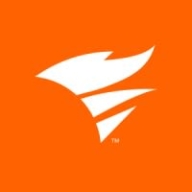

Red Hat Ansible Automation Platform and SolarWinds Network Automation Manager are important competitors in IT automation and network management. Red Hat Ansible Automation Platform shows strength in pricing and support, while SolarWinds Network Automation Manager is noted for its superior features, considered worth the investment.
Features: Red Hat Ansible Automation Platform offers scalable automation for various IT environments, supports seamless integration with numerous IT tools, and aids operational efficiency through automation scripts and analytics. SolarWinds Network Automation Manager provides comprehensive network management with effective monitoring tools, network visualization, and network performance optimization.
Ease of Deployment and Customer Service: Red Hat Ansible Automation Platform permits adaptable deployment in different IT environments and is supported by robust customer service. SolarWinds Network Automation Manager benefits from a straightforward installation process, ensuring quick setup and effective performance management, alongside efficient technical issue resolution.
Pricing and ROI: Red Hat Ansible Automation Platform typically represents a lower setup cost, offering initial value with a flexible pricing model suitable for scalable operations. SolarWinds Network Automation Manager, with a higher initial cost, achieves strong ROI through its extensive network management capabilities, suitable for those seeking a feature-rich solution.
| Product | Market Share (%) |
|---|---|
| Red Hat Ansible Automation Platform | 18.1% |
| SolarWinds Network Automation Manager | 3.8% |
| Other | 78.1% |


| Company Size | Count |
|---|---|
| Small Business | 24 |
| Midsize Enterprise | 8 |
| Large Enterprise | 48 |
Red Hat Ansible Automation Platform is a powerful network automation solution that allows organizations to handle every aspect of their application launch process within a single product. It enables users to share their automations so that teams within an organization can collaborate on various projects with ease. Ansible Automation Platform is designed to be used by all employees involved in the network automation process.
Red Hat Ansible Automation Platform Benefits
Some of the ways that organizations can benefit by choosing to deploy Red Hat Ansible Automation Platform include:
Red Hat Ansible Automation Platform Features
Reviews from Real Users
Red Hat Ansible Automation Platform is a highly effective solution that stands out when compared to many of its competitors. Two major advantages it offers are its automation manager and its comprehensive centralized GUI-based management interface.
MD J., a solution architect at STBL, says, “The automation manager is very good and makes things easier for customers with multi-cloud platforms.”
Aankit G., a Consultant at Pi DATACENTERS, writes, “We like the GUI-based interface for the tower. Before, we only had a command-line interface to run all the Ansible tasks. Now, the Ansible tower provides the complete GUI functionality to run, manage, and create the templates and the Ansible jobs. This includes the code and YAML file we can create. The GUI interface is the added advantage of this solution, including some integration with the different plugins.”
Scale environments from 1,000 to tens of thousands of nodes with comprehensive performance, traffic, WAN, and switch port monitoring, automated change and configuration management, and IP address management in an integrated network automation software solution.
We monitor all Network Automation reviews to prevent fraudulent reviews and keep review quality high. We do not post reviews by company employees or direct competitors. We validate each review for authenticity via cross-reference with LinkedIn, and personal follow-up with the reviewer when necessary.